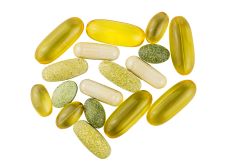
J. David Legan, PhD
Director of Science
David earned his Ph.D. in Food Technology from the University of Reading in the UK by modeling the ecology of mixed microbial populations, and then moved to Campden BRI in a variety of microbiological food safety research and client service roles. During that time, he was project lead for the Bacillus component of the UK’s pathogen modeling program. He moved again to Nabisco Research in New Jersey where he ran the corporate microbiology lab and developed a program of preservation technology development and microbial modeling. After the Kraft Foods acquisition, he moved to Chicago to work on Food Safety and Preservation research, and through modeling and validation studies:
- Optimized Oscar Mayer’s use of lactate and diacetate and their naturally cultured alternatives as Listeria-control agents in Ready to Eat meats
- Specified process conditions central to Oscar Mayer’s commercial launch of High Pressure Pasteurization of naturally cured RTE meats
David had responsibility for the Kraft cultures R&D group, developed a partnership to explore microwave sterilization leading to several patents, and led a program that developed an internal proprietary natural antimicrobial commercialized in several Kraft products. Technologies from his group supported approximately $4 billion in annual sales.
After years as a microbiology "client", he is now back in the "provider" role as Director of Science at Eurofins Microbiology Laboratories, Inc., by way of the Covance Food Solutions group based in Madison, WI, which he joined in 2016. In this role, he ensures appropriate method validation, explores new testing technologies, and fields multiple complicated food microbiology questions.
Products that his team has evaluated or developed and launched include:
- The 3M MDS platform in the Madison microbiology laboratory
- Flow cytometry for enumeration of probiotics
- Strain-level confirmation of probiotic identification using the polymerase chain reaction (PCR)
- Next-generation sequencing using the Oxford Nanopore Technologies GridION sequencing platform for microbial identification and microbiome analysis
Below are resources from David:
Eurofins Food Chemistry Testing, Madison and Eurofins Assurance are pleased to announce the launch of product certification designed to safeguard the quality of dietary supplements, ingredients and food. Brands, retailers, and facilities in the dietary supplements industry can leverage these new schemes to demonstrate their commitment to regulatory compliance and quality. Click to learn more about this new certification.
Product certification plays a vital role in minimizing the potential risks of adulteration, contamination, and other quality issues in your product. This infographic outlines the steps to earning the Eurofins Assurance Mark for your dietary supplement, ingredient, or food product.
Issues during the Clean-In-Place (CIP) process, such as insufficient rinsing, can lead to the contamination of products, resulting in quality and/or safety concerns. This on-demand webinar covers various strategies for the detection of CIP chemicals in foods, beverages, and related products. Originally Recorded on June 25, 2025
Chlorates and perchlorates are chlorine-based oxyanions that have emerged as contaminants of concern in the food and dietary supplement industries. These compounds are highly soluble in water and persistent in the environment, making them difficult to eliminate once introduced into the supply chain. Continue reading to learn what you can do to test for these contaminants.
California passed Assembly Bill 899, a law aimed at holding baby food manufacturers to a higher standard and mandating monthly testing of finished baby food products. As concerns grow about heavy metals in food, especially in infant formula, we must find a way to protect these vulnerable individuals. Read more about California Bill 899 by clicking the link.
Modern infant formula is a remarkable achievement in nutritional science, meticulously designed to meet or exceed all essential dietary needs for infants. Read this editorial by Eurofins Food Chemistry Testing CSO, Darryl Sullivan to learn about the rigorous analytical testing and regulatory requirements that companies must meet to bring infant formula to market.
June 24th, 2025– In response to evolving regulatory expectations and growing public health concerns for Bisphenol A (BPA), Eurofins Food Chemistry Testing Madison, Inc. (EFCT) has expanded its advanced testing capabilities to detect and quantify BPA. Read our press release to learn more.
As major retailers implement stricter testing requirements and regulatory expectations, ensuring compliance and quality in dietary supplements is more critical than ever. Join us as we navigate the latest advancements in testing and compliance for dietary supplements, helping brands and suppliers maintain regulatory integrity and consumer trust in a rapidly changing market. Originally Aired on June 11, 2025.
Because of the potential consumer health and economic risks associated with mycotoxin contamination, it’s critical to fully understand the food production and safety challenges presented by mycotoxins. Our infographic answers the following frequently asked questions to provide insight into addressing these concerns.
Explore the food safety concerns surrounding Bisphenol A (BPA) in packaging, its potential health risks, and emerging alternatives like BPAF, BP, BPF, and BPS.












